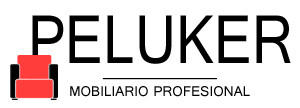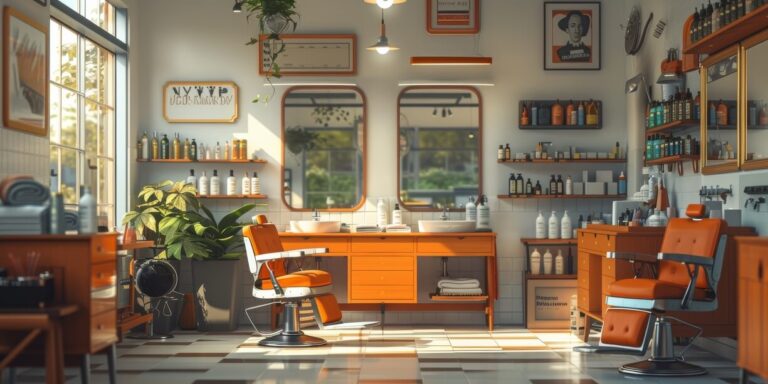Barber Backwash Units are an indispensable tool in any hair salon or barbershop. They allow for the quick and efficient washing of clients’ hair before any cutting or styling service. However, if not used correctly, Can pose health risks to both clients and barbers. In this article, we’ll explore how Barber Backwash Units work, potential associated risks, and practical tips to ensure their safe use.
How do Barber Backwash Units Work?
Barber Backwash Units consist of a reclining chair with an integrated sink and a flexible hose, allowing the barber to wash the client’s hair with both hot and cold water. Most models come with manual or electronic controls to regulate water temperature and flow.
The typical procedure is as follows:
- The client sits in the reclining chair and positions their head over the sink.
- The barber adjusts the height and angle of the backrest for added comfort.
- The hair is wetted with lukewarm water to moisten it.
- Shampoo is applied, gently massaging the scalp with the fingertips.
- The hair is thoroughly rinsed with lukewarm water to remove any shampoo residue.
- Optionally, conditioner or hair treatment can be applied.
- Excess water is removed by squeezing with the head down or drying with a towel.
- The client sits up again to continue with the service.
Health Risks from Misuse
While Barber Backwash Units are very useful, they can also pose risks if not operated safely:
Hot Water Burns
Water that is too hot can cause burns on the scalp and the skin of the neck and ears. Children and the elderly are especially vulnerable. The ideal temperature is between 90-100°F (32-37°C). It is essential to check it before each use.
Infections
If not properly disinfected between clients, Barber Backwash Units can become reservoirs of microbes that cause infections such as athlete’s foot, scalp mycosis, or candidiasis. Thorough cleaning of all surfaces is important.
Cervical Injuries
Abrupt neck angles during washing, especially when maintained for a prolonged period, can cause painful muscle strains or subluxations of the cervical vertebrae. The backrest should be adjusted to a comfortable angle.
Tips for Safe Use of Barber Backwash Units
By following some simple precautions, Can be safely used for both clients and barbers:
Check the Water Temperature
Use a thermometer to ensure it is between 90-100°F (32-37°C) before each client. If you only have manual controls, let the water run for a few minutes and test it on your wrist. The water should feel lukewarm, not hot.
Adjust the Height and Angle
Place the client in a comfortable reclined position, with the neck straight and head facing upwards. Avoid bending the neck to the sides.
Be Gentle and Careful
Do not rub the scalp roughly. Use your fingers to gently massage and rinse delicately. Take special care with children and the elderly.
Never Leave the Client Alone
Stay next to the Barber Backwash Unit while operating it and washing the client’s hair. Never leave them alone, even for a few seconds, to prevent accidents.
Clean and Disinfect After Each Use
Thoroughly clean with an approved disinfectant all surfaces of the Barber Backwash Unit that were in contact with the client: backrest, sink, hose, armrests, etc.
Frequently Check the Hoses
Inspect for leaks, kinks, cracks, or worn parts. Immediately replace hoses if you detect any defects.
Follow the Maintenance Schedule
Perform preventive maintenance of the Barber Backwash Units according to the manufacturer’s recommendations. Check the good condition of valves, pumps, electrical systems, and heating.
Use Protectors and Towels
Place disposable plastic protectors over the backrest and armrests. Cover the client with a towel for greater comfort and privacy.
Frequently Asked Questions about Barber Backwash Units
How often should a Barber Backwash Unit be disinfected?
It is recommended to disinfect the Barber Backwash Unit after each client without exception. This will prevent the spread of bacterial or fungal infections among users.
Can Barber Backwash Units cause cervical injuries?
Yes, if the head and neck are placed at very abrupt angles and maintained like this for extended periods. The barber should adjust the backrest to keep the neck straight and avoid twists.
Is it mandatory to put protectors on Backwash Units?
It is not mandatory, but it is highly recommended to use disposable plastic protectors for hygiene and to avoid direct contact with surfaces that cannot be 100% disinfected, such as vinyl or foam.
How often should the water temperature be checked?
It is advisable to check the temperature before washing each client’s hair. Even if the controls are fixed, the temperature can vary from one day to another.
Can clients with wounds or stitches on their head be washed?
Preferably not. Open wounds or recent surgical stitches can become infected with water and substance contact. If indispensable, they should be covered with plastic.
Is it viable to use portable Barber Backwash Units in homes or at events?
Yes, there are smaller portable Barber Backwash Units that function by connecting to common sinks. They are ideal for home services or use at events, as long as their correct disinfection can be guaranteed.
Do Barber Backwash Units require any special maintenance?
Beyond cleaning, it is recommended to follow the manufacturer’s maintenance program, which usually includes periodic checking of pumps, valves, electrical, and water systems.
Should Barber Backwash Units be dried after use or can water be left standing?
Ideally, surfaces should be dried with towels after each client. Leaving standing water promotes bacterial proliferation. At the end of the day, it should also be dried well.
Is a special permit required to operate in a shop?
Yes, a health permit from local authorities is usually required to operate any equipment in a business that involves physical contact with clients.



